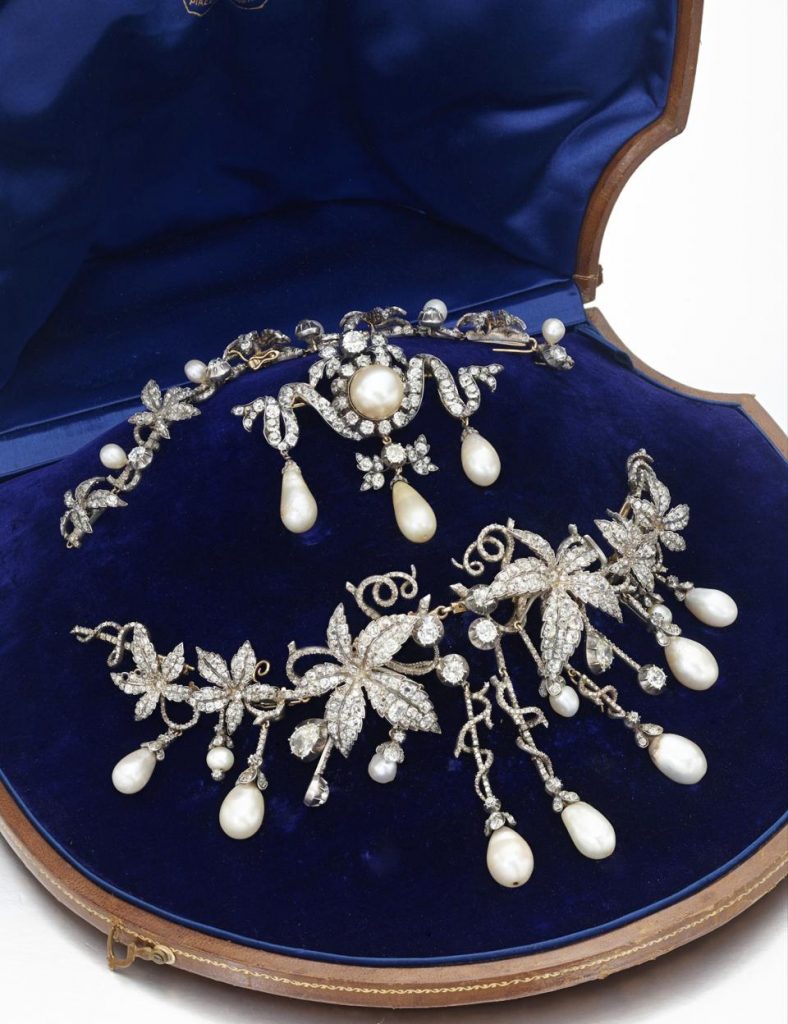A unique brooch set with old mine-cut diamonds once owned by Napoleon Bonaparte will headline Sotheby’s Royal & Noble Sale on November 12 at the Mandarin Oriental in Geneva. It will be offered at auction for the first time with an estimate of CHF 120,000–200,000 ($150,000–250,000).
According to Sotheby’s, the brooch was seized by the Prussian army at the Battle of Waterloo, as the defeated French emperor fled the battlefield. Among the personal belongings Napoleon carried to Waterloo, it was left behind when he abandoned several carriages mired in mud a few miles away.
The circular diamond brooch is about 45mm in diameter, features an oval diamond of more than 13 carats surrounded by nearly 100 old mine-cut diamonds arranged in two concentric rows. Created in a Parisian atelier around 1810, the jewel was likely designed to adorn Napoleon’s bicorne hat and fitted with a suspension hook for use as a pendant.
After Waterloo, the brooch—along with Napoleon’s hat and sword—was presented to Prussian King Friedrich Wilhelm III as battle trophies on June 21, 1815. It remained in the House of Hohenzollern for generations, passing from Friedrich Wilhelm III to Kaiser Wilhelm II and later to his grandson Prince Louis Ferdinand of Prussia (1907–1994). In recent years, it has belonged to a private collection.
Natural Pearl and Diamond Hair Ornament and Brooch
Sotheby’s Royal & Noble sale, the only annual auction dedicated to royal and noble jewels, will also feature a natural pearl and diamond hair ornament and brooch from a European noble family, estimated at CHF 340,000–500,000 ($427,500—628,600).
Sotheby’s describes the pieces as “extraordinary examples of jewelry as supreme historical showcases,” representing a rare ornamental style moment in history. They will be offered together as one lot, as they have been for nearly two centuries.
Originally owned by Prince Franz Xaver of Saxony and Poland (1730–1806), the jewels descended to his daughter Cunegonde of Saxony, Marchesa di Montoro (1774–1828), cousin to the kings of Spain, Naples, and France. The pearls were first mounted as a tiara for Cunegonde’s 1796 wedding, later inherited by her son, and around 1840 remade into a Sévigné-style hair ornament—an elaborate design framing the face with garlands of jewels. Sotheby’s attributes it to the French jeweler Fossin, predecessor to Chaumet, and believes it may be the last surviving example of its kind.
As fashions changed, the piece was later adapted as a necklace, devant-de-corsage, and set of hairpins. The accompanying brooch, incorporating pearls of the same provenance, dates from the 1860s and features a ribbon motif characteristic of that era.
A Historic Light Pink Diamond Ring from Princess Neslishah Sultan
A rare light pink diamond ring weighing more than 13 carats will also be offered for the first time, with an estimate of CHF 240,000–400,000 ($301,750—502,900).
The ring belonged to Princess Neslishah Sultan (1921–2012), one of the last Ottoman princesses and the final person officially bestowed the title “Sultan” or “Princess of Imperial Blood.”
Neslishah married Muhammad Abdel Moneim (1899–1979), heir to Egypt’s Mohammed Ali dynasty. A week before their 1940 wedding, she received from Princess Khadija Hanim a light pink diamond ring once gifted by Empress Catherine I to Ottoman Sultan Ahmed III during negotiations for the 1711 Treaty of the Pruth, according to Sotheby’s. The diamonds remained in the Ottoman treasury until Sultan Abdul Hamid II gave them to his cousin Princess Emina Ilhamy, mother of Khedive Abbas Hilmi II. The ring stayed in the family until Neslishah’s death in 2012.

